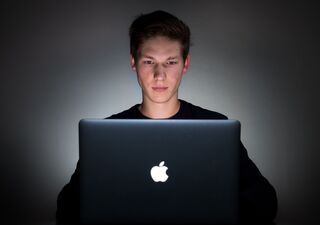Health
Why We Need the Mental Health Version of Brushing Teeth
Modern lifestyle necessitates active mental health hygiene.
Posted April 21, 2021 Reviewed by Ekua Hagan
Key points
- Humans' dental health declined with the rise of sugar in the 1850s. Similarly, we need to guard our mental health against "mental health sugar."
- "Mental health sugar" refers to aspects of modern life that can be harmful to our minds in excess.
- Examples of mental health sugar are social media and smartphones.

In the early 1900s, less than 7% of US adults brushed their teeth or even had toothpaste. As you might imagine, WWI recruits had such terrible oral hygiene that the military pronounced dental disease a national crisis.
Fast forward a century, and we’re much better about setting our teeth up for success. The American Dental Association recommends brushing 2 minutes twice daily, a recent survey confirmed 77% now follow the guidelines.
If the early 1900s were dentally bleak, you might assume teeth from the centuries and millennia prior were downright rotten. But analysis of ancient skeletons shows that hunter-gatherer teeth were actually pretty healthy, maybe healthier than the average set of chompers today.
With the development of farming 10,000 years ago, then the rise of sugar in the 1850s, dental disease increased.
So it’s not that humans by nature require fluoride toothpaste and a vinyl toothbrush. It’s more that in the context of our modern diet and lifestyle, this is how we can protect our teeth.
What we need is the mental health equivalent of brushing our teeth. We need clear consistent habits that protect the health of our minds.
Mental health sugar
Modern lifestyle changes, even positive and delicious ones, necessitate new health habits. The rise of sugar and simple carbohydrates in our diet meant if we wanted to protect our teeth we needed to care for them in a new way.
Mental health sugar is a term I coined to describe aspects of modern life that can be quite desirable, sometimes harmful in excess. In short, we need new ways to care for our minds if we want to protect them from ill-health.
Mental health sugar isn't the cause of mental health issues. But it does contribute to the soaring rates. Even pre-pandemic, 1 in 5 US adults have a diagnosable mental health condition, with anxiety and depression being the most common. COVID-19, causing unspeakable loss, exacerbated the levels to the point that in a recent CDC survey, over 40% reported an adverse mental or behavioral health condition.
I want to be clear that mental health conditions are complex, impacted by a host of biopsychosocial factors such as genetics, biology, social determinants (e.g., unemployment, racism, poverty), early adverse experience (e.g., trauma), and lifestyle.
Mental health sugar is one contributor, made up of certain lifestyle factors tied to progress. You probably wouldn't give it up completely if given the choice, but that can greatly harm our mental health if left unchecked.
Like sugar itself, mental health sugar isn't inherently bad. I love cookies, but the first is much better for my happiness and health than the 30th. Similarly, mental health sugars can help or harm us depending on how we interact with them.
Examples of mental health sugar
Social media: With social media comes social comparison, a lens through which we view our own capacities and achievements. Social comparison isn’t all bad. Seeing others’ success or moral beauty can inspire us to reach higher. Seeing others' struggles can bring a much-needed perspective, and motivate us to lend a hand. But any of us who have gotten lost scrolling through the lives of “friends” can also probably attest to not feeling so wonderful when done.
One of many problems with social media is that we compare our insides to a highly curated, filtered view into others' outsides. Though apparently designed to make us feel more connected, a recent study of young adults aged 19-32 found more time on social media aligned with great levels of perceived social isolation.
Ultra-convenience: Between working from home, grocery delivery, and delivery/curbside pick-up of other necessities, I can reasonably care for myself and my family without leaving the confines of my home. Even pre-pandemic when outings weren’t limited, on particularly busy workdays I could find myself barely leaving my desk until “oh no it’s time for school pick-up!”
Though not everyone works from home or uses delivery, conveniences of modern life, such as cars and grocery stores, enable a much more sedentary lifestyle, which is a significant risk factor for depression. Reduced effort requirements may also mean missing important mood-altering activities like sunlight on our skin, movement, and interaction. We know sitting for long periods of time is bad for our back, but it also poses threats to the wellbeing of our minds.
Smartphones: When we all have mini-computers within reach most of the day, gone are the days of leaving work at work and home at home. Quiet, uninterrupted time has become an act of will versus a natural part of our days and weeks. In this always-on modern world, it’s no wonder that, even pre-COVID-19, 77% of employees reported having experienced burnout at some point in their work.
In the i-Gen, we’re seeing much higher rates of depression and anxiety as well. A 2018 study lead by Jean Twenge found that between 2010 and 2015, 33% more adolescents exhibited high levels of depressive symptoms, and 31% more died by suicide. This corresponds precisely with the rise of smartphones.
A noteworthy exception to the link between smartphone use and depression was for girls who also had equal time spent in-person with friends. It seems that live human connection protects us from some of the ill effects of social media.
Individualism: The United States is considered one of the most individualistic societies in the world. Culturally, we value autonomy and independence. But the flip side of this can be isolation and loneliness.
In 2017, former US Surgeon General Vivek Murthy called loneliness a “public health epidemic.” In a 2018 report, the Kaiser Family Foundation found that 22% of adults in the US said they often or always felt lonely or socially isolated. Compare this with 9% in Japan. For those with mental health conditions, 47% report loneliness.
As social creatures, we are wired for connection. Close connections act as a salve against stress. Lack of connection makes everything harder, and can counterintuitively nudge us towards further isolation.
Mind care in a high sugar world
The counterbalance to mental health sugar is mental health hygiene.
Sometimes it can feel as if the modern world is conspiring against our well-being. Of course, this isn’t true. But it does speak to the fact that there can be a mismatch between our evolutionary wiring for movement, sunlight, and connection, and our always plugged-in modern world.
In order to thrive in this world that doesn’t always promote or protect mental health, we need to take an active role.
Soaring rates of anxiety and depression mean that not thinking about mental health until there’s a serious issue is like not brushing your teeth until you need a root canal. Prevention doesn’t mean you won’t have issues, but it does mean those issues will be less severe and less costly. Also, the reason to focus on prevention isn’t because you will experience issues. Even if you have no reason to feel you are at risk for mental health conditions, mental health hygiene can support a more vital, energized life.
Mental health isn’t binary; it’s a continuum. It’s multifaceted.
Where do you begin? I’m a big fan of identifying “personal building blocks.” These are foundational practices that promote calm and balance, to bring you back to yourself in tough times.
In my last post, I delved into 7 simple habits to protect your mental health. You can choose from these as a starting point, or use this to inspire your own. Nothing quite as quick as brushing our teeth, but each can pay dividends.
References
Adler, C., Dobney, K., Weyrich, L. et al. (2013). Sequencing ancient calcified dental plaque shows changes in oral microbiota with dietary shifts of the Neolithic and Industrial revolutions. Nature Genetics 45, 450–455. https://doi.org/10.1038/ng.2536
Primack, B. A., Shensa, A., Sidani, J. E., Whaite, E. O., Lin, L. Y., Rosen, D., Colditz, J. B., Radovic, A., & Miller, E. (2017). Social Media Use and Perceived Social Isolation Among Young Adults in the U.S. American Journal of Preventive Medicine, 53(1), 1–8. https://doi.org/10.1016/j.amepre.2017.01.010
Twenge, J. M., Joiner, T. E., Rogers, M. L., & Martin, G. N. (2018). Increases in Depressive Symptoms, Suicide-Related Outcomes, and Suicide Rates Among U.S. Adolescents After 2010 and Links to Increased New Media Screen Time. Clinical Psychological Science, 6(1), 3–17. https://doi.org/10.1177/2167702617723376




